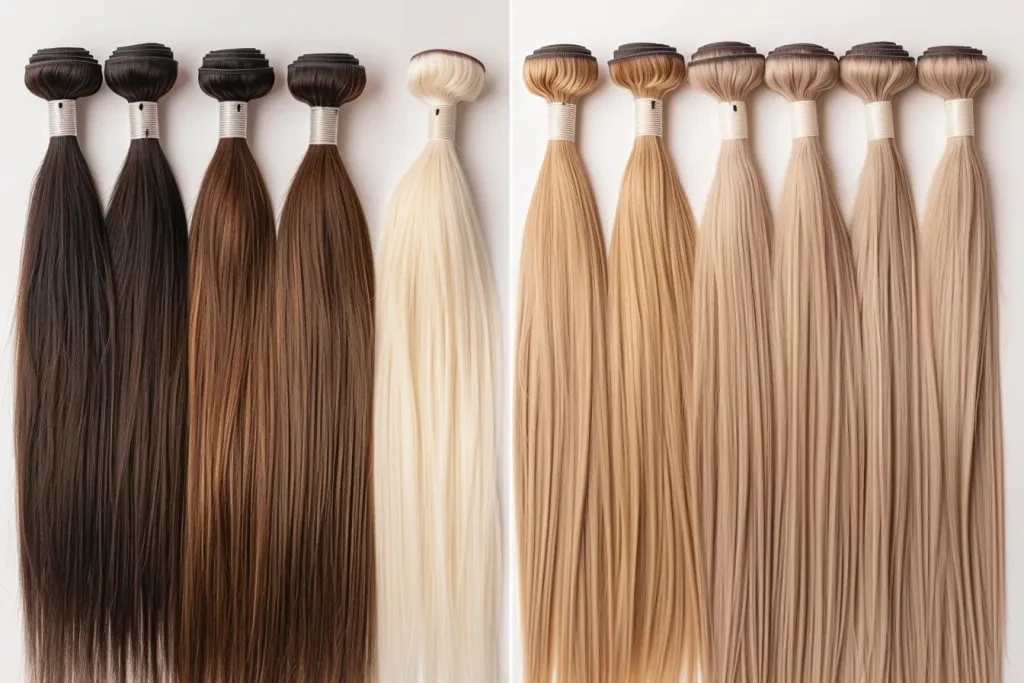Hair extensions offer a transformative solution for those looking to add length, volume, or even a splash of color to their hair. However, navigating the world of hair extensions can be overwhelming, especially when it comes to understanding the cost. This guide aims to demystify the pricing of hair extensions by exploring the five key factors that influence their cost. From the type of hair to the method of application, we’ll provide you with the insights you need to make an informed decision that aligns with your beauty goals and budget.
Table of Contents:
– Types of hair extensions and their costs
– Application methods and pricing
– Maintenance and longevity: What to expect
– The impact of hair quality on pricing
– Where to get hair extensions: Cost comparison
Types of hair extensions and their costs

Hair extensions come in various types, each with its own set of characteristics and pricing. Synthetic hair extensions are the most affordable option, offering a wide range of colors and styles. However, they lack the natural look and feel of human hair extensions, which are pricier but provide a more seamless blend with your natural hair. Within the category of human hair, you’ll find variations such as Remy and virgin hair, which are considered high-quality options due to their intact cuticles and natural appearance. The cost of hair extensions significantly varies based on the type you choose, with synthetic options being the most budget-friendly and high-quality human hair commanding higher prices.
Application methods and pricing

The method of application is a crucial factor that affects the overall cost of hair extensions. Techniques such as clip-ins are the least expensive and can be easily done at home, offering a temporary solution for those seeking flexibility. Tape-ins and sew-ins are more permanent options that require professional installation, leading to higher costs both for the hair and the service. Micro-link and fusion methods are at the higher end of the price spectrum, involving intricate applications that provide a natural look and feel. When considering the cost of application, it’s important to factor in the expertise of the stylist and the time required for the procedure.
Maintenance and longevity: What to expect

Maintaining hair extensions is key to ensuring their longevity, which in turn affects their overall cost-effectiveness. Proper care, including regular washing, conditioning, and gentle styling, can significantly extend the life of your hair extensions. The type of hair and application method also plays a role in maintenance requirements and longevity. For example, high-quality human hair extensions can last up to a year with proper care, while synthetic options may need replacement more frequently. Additionally, some application methods, like tape-ins, require regular salon visits for adjustments, adding to the maintenance cost.
The impact of hair quality on pricing

The quality of hair used in extensions directly impacts their price. High-quality human hair, especially virgin and Remy hair, is prized for its natural appearance, strength, and durability. These options are more expensive but offer a better value in the long term due to their longevity and the ability to withstand styling and coloring. On the other hand, lower-quality human hair and synthetic options are more affordable upfront but may not provide the same natural look or durability, leading to potential additional costs over time for replacements or upgrades.
Where to get hair extensions: Cost comparison

The venue where you choose to get hair extensions can significantly influence the cost. Salons typically offer a full-service experience, including consultation, customization, and professional application, but at a higher price point. Purchasing hair extensions from beauty supply stores or online and opting for a DIY application can save money, but it requires a certain level of skill and confidence. It’s important to weigh the benefits of professional expertise against the potential savings of a DIY approach to find the best option for your needs and budget.
Conclusion
The cost of hair extensions varies widely based on factors such as the type of hair, application method, maintenance requirements, hair quality, and the venue of purchase. Understanding these factors can help you navigate the world of hair extensions with confidence and make an informed decision that aligns with your beauty goals and budget. Remember, investing in high-quality hair extensions and professional application can offer greater satisfaction and value in the long run.




